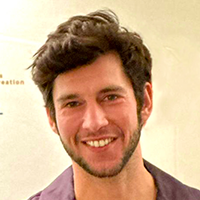A groundbreaking study led by Dr. Yael David of Memorial Sloan Kettering Cancer Center (MSK) cracked a decades-old mystery and discovered a promising path toward the first-ever drug treatment for Hepatitis B—one of the deadliest diseases in the world. And in a surprising twist, the potential cure comes from a medication originally developed for cancer treatment. The study was published on Thursday in the medical journal Cell
Scientists hope their discovery could one day lead to a simple, one-time pill that can wipe out the virus—just like taking an antibiotic.
Hepatitis B, caused by the hepatitis B virus (HBV), affects nearly 5% of the global population and is a leading cause of liver cancer. Over 250 million people worldwide suffer from chronic infection, and the disease kills more than one million people every year. The World Health Organization ranks it as the second deadliest viral infection after tuberculosis.
3 View gallery


The Memorial Sloan Kettering Cancer Center team led by Dr. Yael David
(Photo: Memorial Sloan Kettering)
In Israel, an estimated 90,000 people are infected—mostly through unprotected sex, mother-to-child transmission, and blood transfusions.
Although there is a vaccine for hepatitis B, it’s not a perfect solution. Not everyone has access to it, and it requires multiple booster shots over time. Even then, some people still don’t develop full immunity. For babies born to infected mothers, the vaccine doesn’t work at all. Instead, they must take antiviral medications for life, similar to people with HIV. These drugs don’t eliminate the virus, only keep it under control.
A Seven-Year Scientific Puzzle
The breakthrough study took seven years and was conducted by researchers from MSK, Cornell University, and Rockefeller University, led by Dr. David, an Israeli scientist and Weizmann Institute graduate.
The team discovered a “molecular switch” inside the virus that triggers infection. They found that if they could turn off this switch early enough, they could stop the virus from spreading. They are now in advanced talks with major pharmaceutical companies to develop this treatment, and their findings have caught the attention of Dr. Charles Rice, a Nobel Prize-winning scientist known for his work on hepatitis C.
Dr. David compares the hepatitis B virus to Goldilocks and the Three Bears—except in this version, Goldilocks is the villain. “Just like Goldilocks sneaks into the bears’ house, eats their food, and makes a mess, the hepatitis B virus hijacks the body’s cells and takes over,” she explains.
“In most cases, the immune system fights back, like the bears returning home and chasing Goldilocks away. But in about 20% of cases, the virus doesn’t really leave—it just hides, waiting for the right moment to attack again. It’s like Goldilocks peeking through the window, ready to come back in when no one is looking.”
The Key Discovery: A Drug That Stops the Virus
To understand how the virus infects cells, the researchers studied its genetic makeup and found that it relies on a mysterious protein called “X protein.” Until now, scientists knew very little about this protein—Dr. David even calls it a “rogue protein.”
By targeting this protein, they tested five existing drugs to see if any could stop the virus. Four failed, but one—Curaxin-137 (CBL0137), currently used as a chemotherapy drug—showed incredible results. It didn’t just weaken the virus—it nearly wiped it out completely.
3 View gallery


The synthetic chromosome of the Hepatitis B virus composed of viral DNA and human proteins
(צילום: Memorial Sloan Kettering)
“It was amazing,” says Dr. David. “We weren’t expecting it to work so well. When we saw the results on the computer screen, we just said, ‘Wow.’ The drug didn’t just weaken the virus—it destroyed it, and in very small doses.”
Because Curaxin-137 is a chemotherapy drug, researchers will need to ensure it can be used safely in lower doses. “We want to kill the virus, not harm the patient,” Dr. David explains. “But so far, even at low doses, the drug is doing exactly what we hoped.”
The Next Steps: Clinical Trials
The next challenge is testing the drug in clinical trials. But there’s a catch—hepatitis B doesn’t infect mice, making traditional animal testing difficult. “The only animal that gets infected like humans do is the beaver,” says Dr. David, laughing. “And my team wasn’t exactly excited about going out to catch beavers by the river.”
Dr. David has always loved solving puzzles—both literal and scientific. “As a kid, I loved putting together tiny puzzle pieces. That’s exactly what biochemistry is—understanding small details to see the bigger picture,” she says.
Born in Israel to a military pilot father, Dr. David’s family moved frequently between air force bases. After serving in the Israeli military, she studied at Tel Aviv University and Stony Brook University in New York, then completed a PhD at the Weizmann Institute. Later, she did postdoctoral research at Princeton University before receiving an offer in 2016 to establish her own lab at Memorial Sloan Kettering—one of the world’s leading cancer research centers.
“I had a tough decision—should I return to Israel and open a lab at Weizmann, or take a risk and stay in the U.S.?” she recalls. “In the end, I decided to take the leap, even though it meant dealing with the challenges of living in a foreign country.”
Her lab focuses on gene regulation, and the hepatitis B study was the first time they tackled viruses. “I came in with no preconceptions, and maybe that’s what allowed me to see things in a new way,” she says.
Get the Ynetnews app on your smartphone: Google Play: https://bit.ly/4eJ37pE | Apple App Store: https://bit.ly/3ZL7iNv
The researchers believe their findings might also apply to other viruses, such as human papillomavirus (HPV) and Epstein-Barr virus (EBV).
“This strategy—where a virus sneaks in and takes over—is really efficient. We hope this drug could help fight other infections, too,” says Dr. David. “This is definitely the biggest scientific breakthrough of my career so far. I hope it won’t be my last—but even if it is, I’d be totally okay with that.”



